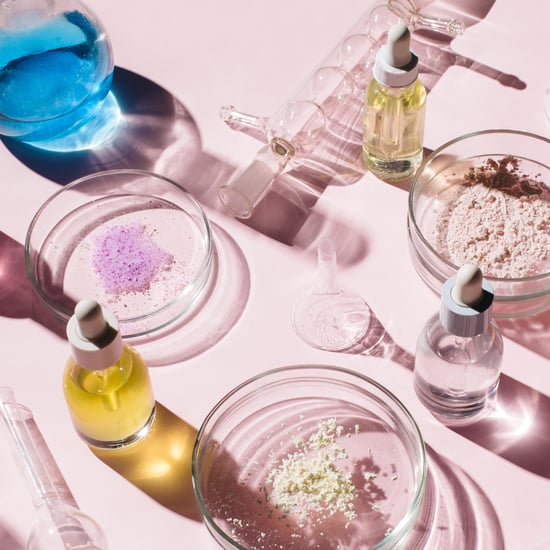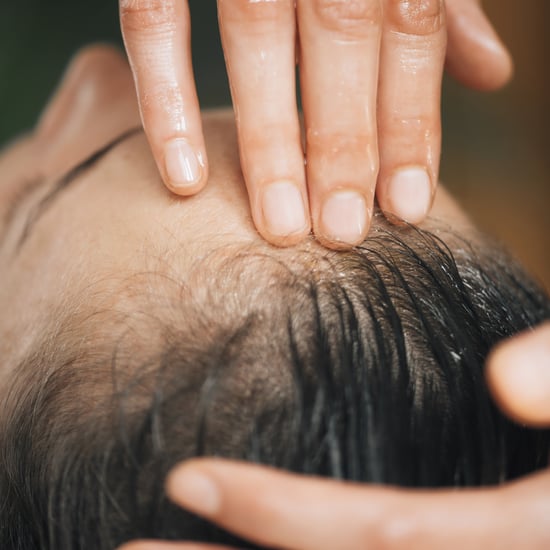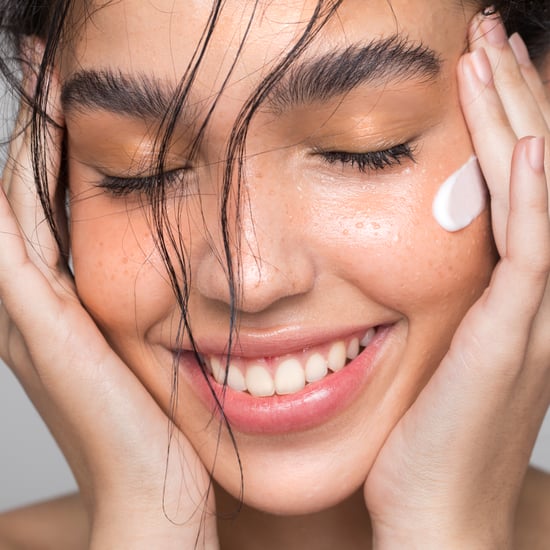Does Hand Cream Stop Hand Sanitiser Gel From Working?
Does Hand Cream Stop Hand Sanitiser From Working? Derms and Cosmetic Chemists Weigh In

We've all been washing our hands and slathering on more hand sanitiser than we knew was possible. And while we absolutely still need to continue practising good hand hygiene, we also need to take care of our dry and irritated hands.
Thankfully, there are plenty of hand creams out there to soothe sore skin. But with all of the talk of obsessive hand sanitiser and hand cream use, it got our editors wondering: could using hand cream immediately after using hand sanitiser alter the gel's ability to effectively kill bacteria? It's a question we also saw come up whilst scrolling on Instagram, so of course, we had to investigate. To do that, we spoke to top dermatologists and cosmetic chemists to figure out whether using hand cream immediately after sanitiser will stop it from working.
The CDC warns that, "when hands are heavily soiled or greasy, hand sanitisers may not work well."
Alcohol-based hand sanitiser works by quickly (and easily) reducing the number of germs on the skin, but it doesn't always kill all of them. The reason sanitiser is not as effective as hand washing is because it doesn't physically remove the germs from your hands. Also, similar to sunscreen, people rarely use enough hand gel, meaning that the gel can sometimes get wiped away accidentally before it's taken full effect, according to the Centers For Disease Control and Prevention (CDC). Further to this point, the CDC warns that, "when hands are heavily soiled or greasy, hand sanitisers may not work well." So, it makes sense that a big dollop of hand cream immediately after using sanitiser might disrupt its effectiveness.
"While there is no scientific evidence I know of, it actually makes sense," said cosmetic chemist Ginger King. In the United States, triclosan (a powerful antibacterial and antifungal agent), was banned in the country (it has not been banned in the UK), meaning for sanitiser to be effective, it has to contain a minimum of 60 percent alcohol. "Alcohol kills bacteria and viruses, but if there is another medium they can grab onto — such as a hand cream — the bacteria may be able to survive."
This means that theoretically, hand cream can disrupt hand gel, but many of the experts believe that it's highly unlikely. "[Used correctly], alcohol-based hand sanitisers pretty much work on contact, so you are not likely to negate its activity by quickly applying a hand cream," said cosmetic chemist Ni'kita Wilson. The dermatologists we spoke to stressed the "used correctly" instruction. "It's very important to let hand sanitiser completely dry before applying hand cream to ensure it works effectively and the efficacy isn't compromised, however you don't need to wait as long as 10 minutes", said Dr Susan Mayou, consultant dermatologist at Cadogan Clinic in London.
"For [hand gel] to be effective, you need to apply the correct amount [the bottle should tell you the correct amount]. You also need to apply to clean hands because oil, grease, dirt, or even moisturisers can block their effectiveness", said New York-based dermatologist Joshua Zeichner, reiterating the CDC's advice. If you're doing those steps correctly, Zeichner continued, you're not likely to fully stop the sanitiser from working as the sanitiser dries and takes effect within seconds of application.
To sum it up, hand creams probably don't negate the results of hand sanitiser completely, provided you've applied enough of the product and that you've "rubbed the product all over the surfaces of your hands until your hands are dry," as the CDC recommends. And most of us are probably already applying it correctly: squeeze out a dollop, rub it in well — maybe do a little air wave motion to make sure it's completely soaked into the skin — and then you apply hand cream. So don't go and cut out creams altogether (they're important in preventing severe dryness), but do wait until your hands are totally dry from the hand gel — which may be a minute or two — before applying your favourite cream.





